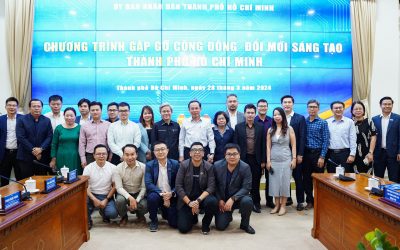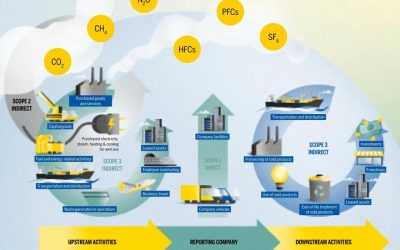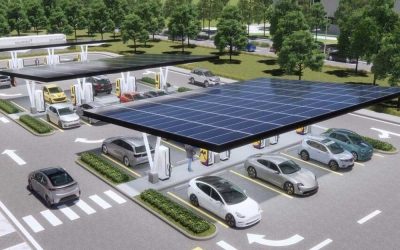Solar Tracker System has a high feasibility consideration in the correlation between two economic-technical criteria among the approaches that have been researched to enhance the performance of the solar battery system. The information in this article will help you understand more about the specifications of these systems.
Advantages of a Solar Tracker System
On the world’s solar radiation map, Vietnam has the advantage of being one of the countries with the highest sunlight allocation throughout the year. Solar radiation is not only numerous but also stable from the 17th parallel throughout the year. The amount of sunlight hours per year in the north is around 1500-1700 hours, whereas it is about 2000-2600 hours in central and southern Vietnam. Furthermore, Vietnam has an abundant solar resource with an average solar intensity of 3.69 kWh/m2 in the north and 5.9 kWh/m2 in the south.
Since 2016, with positive government policies promoting renewable energy projects, particularly solar energy, the total capacity of solar power installations across the nation has reached around 19,400 MWp (calculated by the end of December 31, 2020). (Equivalent to 16,500 MW).
With the increasing electricity demand, solar energy will strongly develop in the future. However, the most efficient use of this energy source remains a big question for the government and investors. One of the biggest concerns is how to improve the performance of solar battery system’s power. Currently, several measures have been researched and implement to answer this concern, such as replacing battery-making materials, 2-sided battery design, energy storage, or battery control that always follows the sun (Solar Tracker system)… in which Solar Tracker solution is very feasible when considering the correlation between two economic-technical criteria.
Solar Tracker System Specifications
Several automatic solar tracker systems were announced and successfully tested worldwide, with three rotation kinds, including along a horizontal axis and around two axes (Figure 1). When compared to the performance of fixed batteries, the version of Solar Tracker can be increased by more than 20%. (Figure 2). However, the battery can be oriented in a variety of ways depending on the rotary style. These systems have specific pros & cons.
Figure 1. Solar Tracker Rotation Principles
Figure 2. Compare the performance of Solar Tracker and fixed system
Components of a Solar Tracker System
The transmission system to rotate the battery is divided into single-axis trackers (Figure 3) and dual-axis trackers (Figure 4). Dual-axis trackers outperform single-axis trackers in terms of performance but have lower benefit-cost balance points. As a result, the Single-axis tracker is the most often used option and rated with high durability, flexibility, and an essential texture that may rotate the system with High power ranging from 10-200kwp to the possibility of integrating extension for large capacity farms MWP.
Figure 3. Three popular rotating types of The Solar Single-Axis Tracker system
Figure 4. Solar Tracker type around dual axes
Installation and Maintenance of a Solar Tracker System
The Solar Single-Axis Tracker system is designed to rotate around a horizontal axis. The optical sensor directs the battery to constantly spin towards the most sunshine to obtain the best performance.
The illustrations are shown below:
Figure 5. Placement of the battery over time
Figure 6. String wiring installation detail
Figure 7. The Solar panel’s rotation angle
Figure 8. The screw-wheel transmission system’s texture and location
Figure 9. Tracker mounting bracket system
Figure 10. Bolt fixed system
Figure 11. Illustration of screw drive system
Figure 12. Slewing bearing system
Figure 13. Position texture connecting swivel axis
Figure 14. Vibration reduction system
Figure 15. Some working positions when there is a wind
Figure 16. Bracket and bolt
Figure 17. Transmission texture in the directions
Figure 18. Bracketing pillar system
Figure 19. Wind sensor system
Figure 20. Diagram connected to the sensor
Figure 21. Diagram of the whole system
Vu Phong Energy Group Tracker solution
Since 2019, Vu Phong Tech has successfully designed, get the Solar Tracker Mini pilot in the North. Vu Phong Tech also deployed a set of systems with tens of MWP in Ninh Thuan as a unit responsible for R&D in Vu Phong Energy Group.
Renewable energy, the key to sustainable development | ANTV
Vu Phong Tech’s Solar Tracker system at Hung Vuong School of Path, Hung Yen. (Video source: ANTV – Truyen hinh Cong an Nhan dan).
Adani Solar Power Plant in Ninh Thuan employs a solar battery system installed by Vu Phong Tech – Vu Phong Energy Group
Vu Phong Energy Group









